marine tourism best management practices a practical guide
marine tourism best management practices a practical guide
marine tourism best management practices a practical guide
You also want an ePaper? Increase the reach of your titles
YUMPU automatically turns print PDFs into web optimized ePapers that Google loves.
Marine Tourism Best Management PracticesPeople For Puget Sound • pugetsound.orgEmerging Technologies and Fuels:Reductions in energy and emissions can be accomplished through:1. Electronic <strong>management</strong>/Injection equipment such as electronic controlled jerkpumps, electronic controlled unit injectors and Common rail systems (SouthwestResearch Institute; www.swri.org)2. Fuel composition: Low and ultra-low sulphur fuels, SO 2 reduction and alternativefuel mixes.3. Exhaust After treatment: Particulate Matter traps, oxidation catalysts andselective catalytic reduction.Alternatives to Conventional Number 2 Diesel Fuel:The five most common alternatives to conventional number 2 diesel fuel include:1. Ultra-low Sulfur Diesel fuel (ULSD)2. Biodiesel (B20)3. Number 1 diesel fuel4. Compressed Natural Gas5. PropaneThere is critical mass in the Puget Sound Georgia Basin to reduce diesel emissions,including a pilot by the Washington State Ferries, Clean School Bus Program, WestCoast Diesel Emissions Reduction Collaborative, and the Georgia Basin Puget SoundAirshed Characterization Study. Washington State Ferry’s Clean Fuel Initiatives alignswith the Governor’s Executive Order which requires Washington State agencies todevelop and implement sustainability plans (Executive Order 02-03).(See www.wsdot.wa.gov/ferries/pdf/CleanAir.pdf; www.northwestcollaborative.org;www.pscleanair.org; www.cleanairfleets.org/altfuels.html and www.pyr.ec.gc.ca/airshed/).1. Ultra-Low Sulfur Diesel: Ultra-low sulfur diesel fuel has had the sulfur contentreduced from approximately 500 parts per million (ppm) to 13 ppm sulfur. ULSD wasformulated to meet the Environmental Protection Agency’s 2007 emissions standards(see below for the federal phase in requirements).Benefits: Using USLD fuel without particulate filters or oxidation catalysts could provideup to 13% reduction in particulate matter (PM), a 13% reduction in hydrocarbons(HC), a 6% reduction in carbon monoxide (CO) and a 3% reduction of nitrogen oxide(NO x). When USLD is used with particulate filters or oxidation catalysts, the reductionsare impressive, including up to 80% reduction in PM, 90% in HC, 90% in CO and up to20% in NO x.14


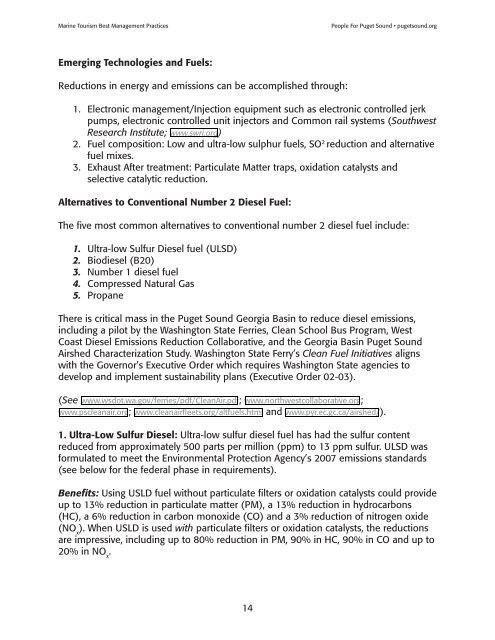
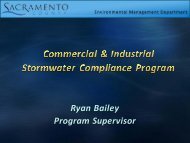
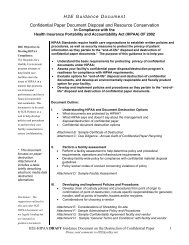
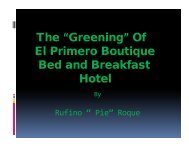
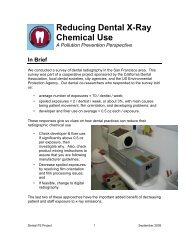
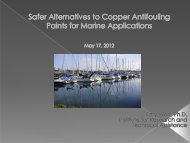
![Dental Amalgam Use [pdf]](https://img.yumpu.com/33828185/1/190x245/dental-amalgam-use-pdf.jpg?quality=85)




